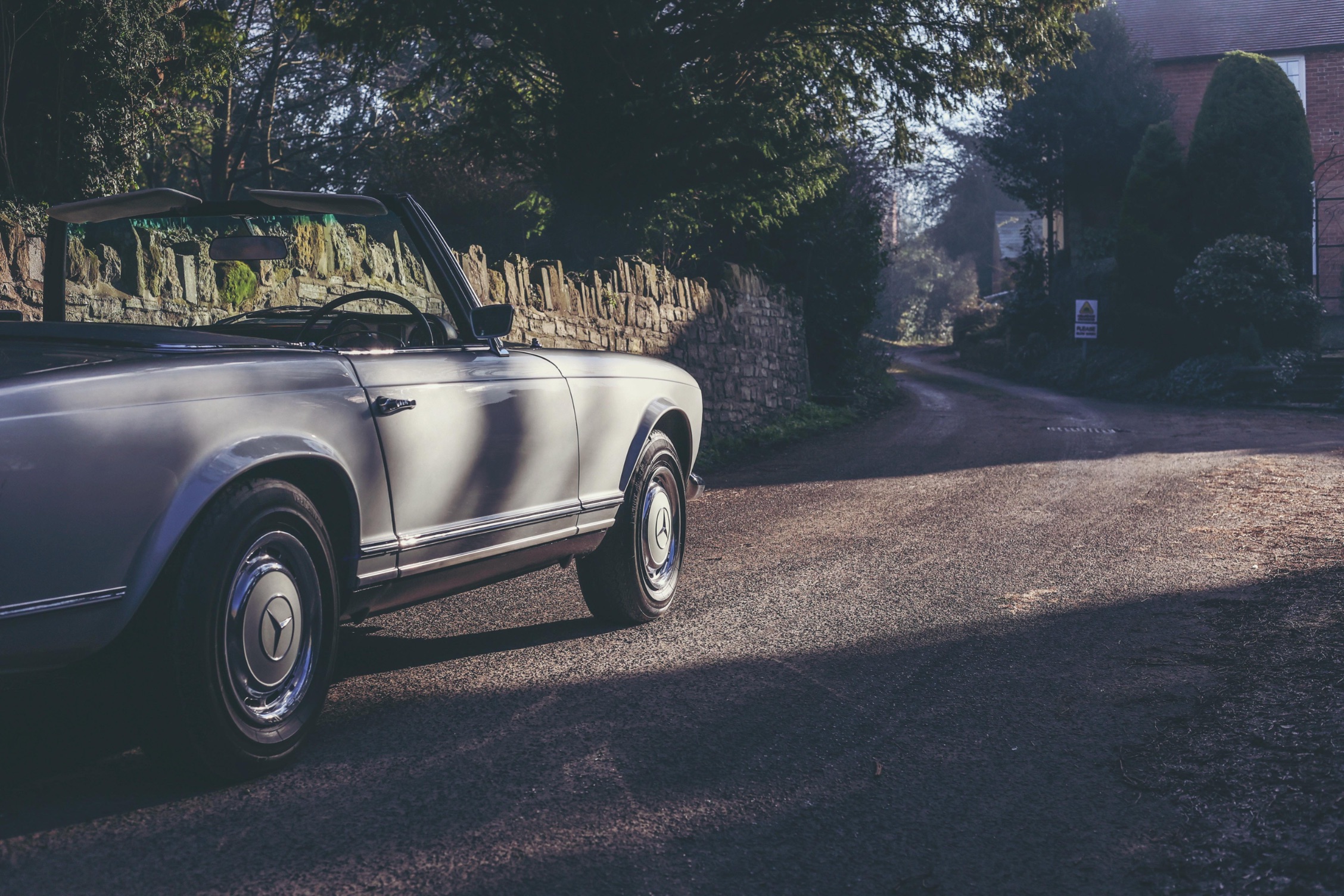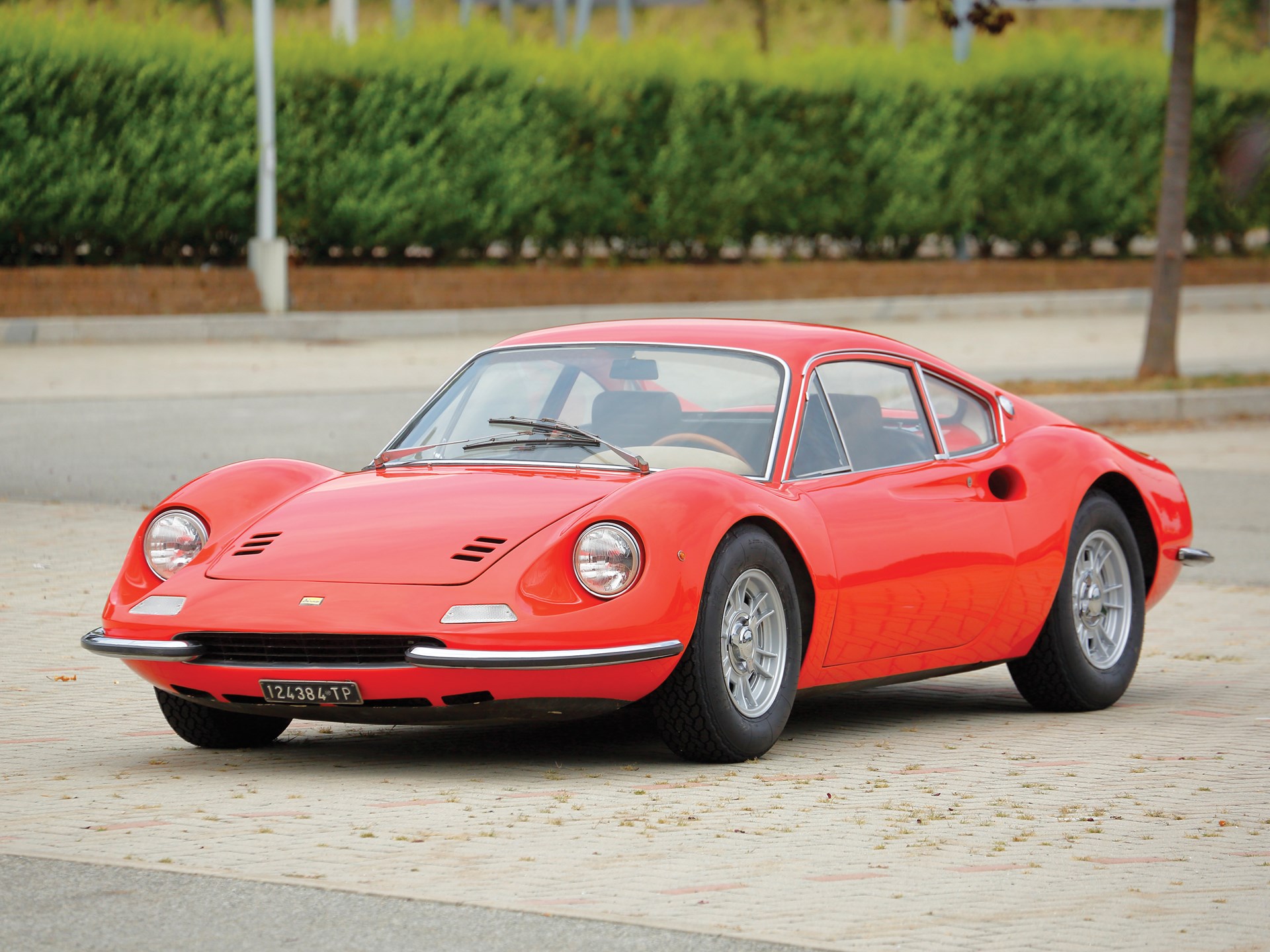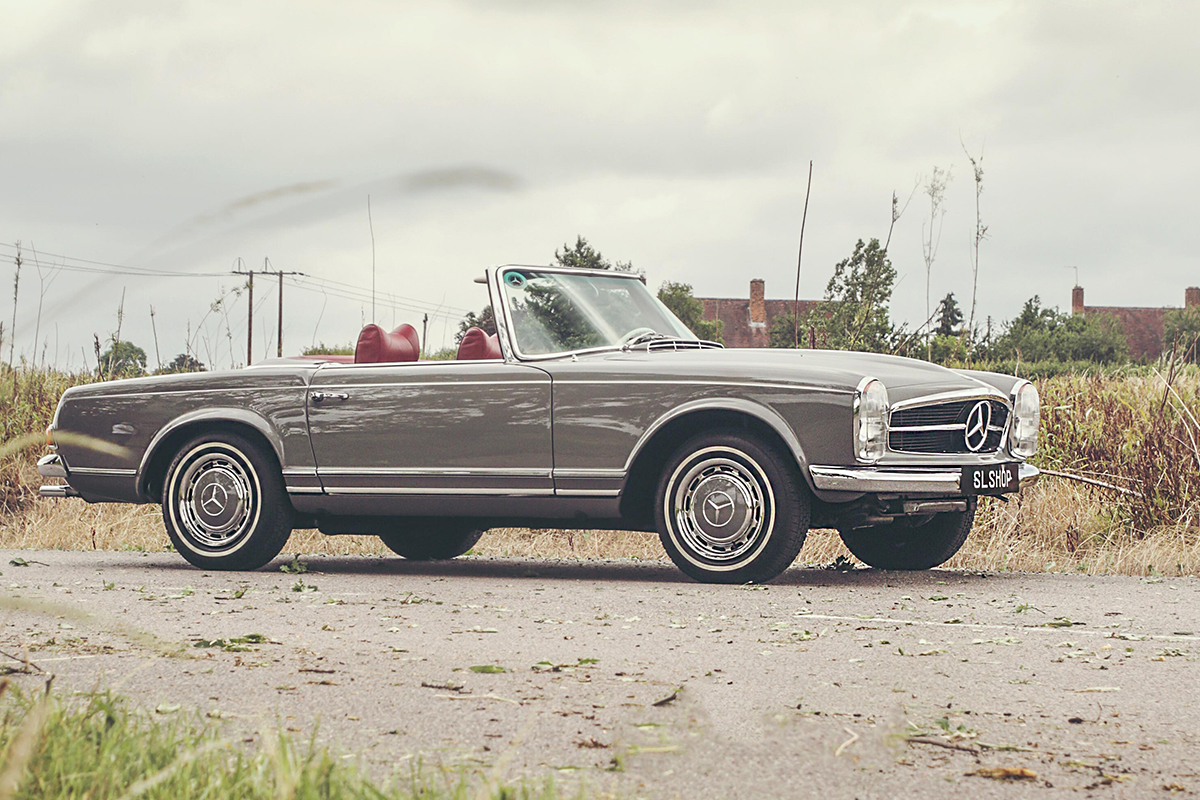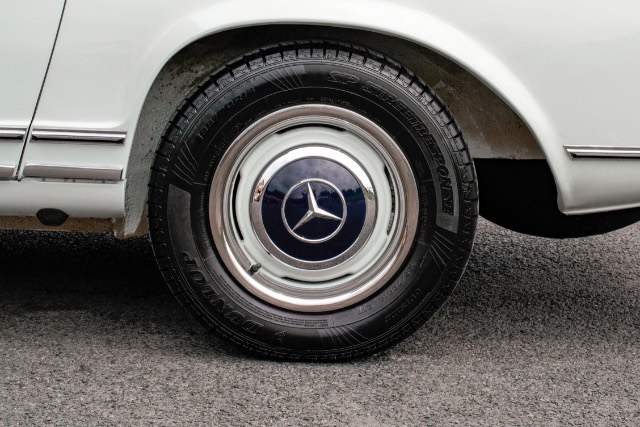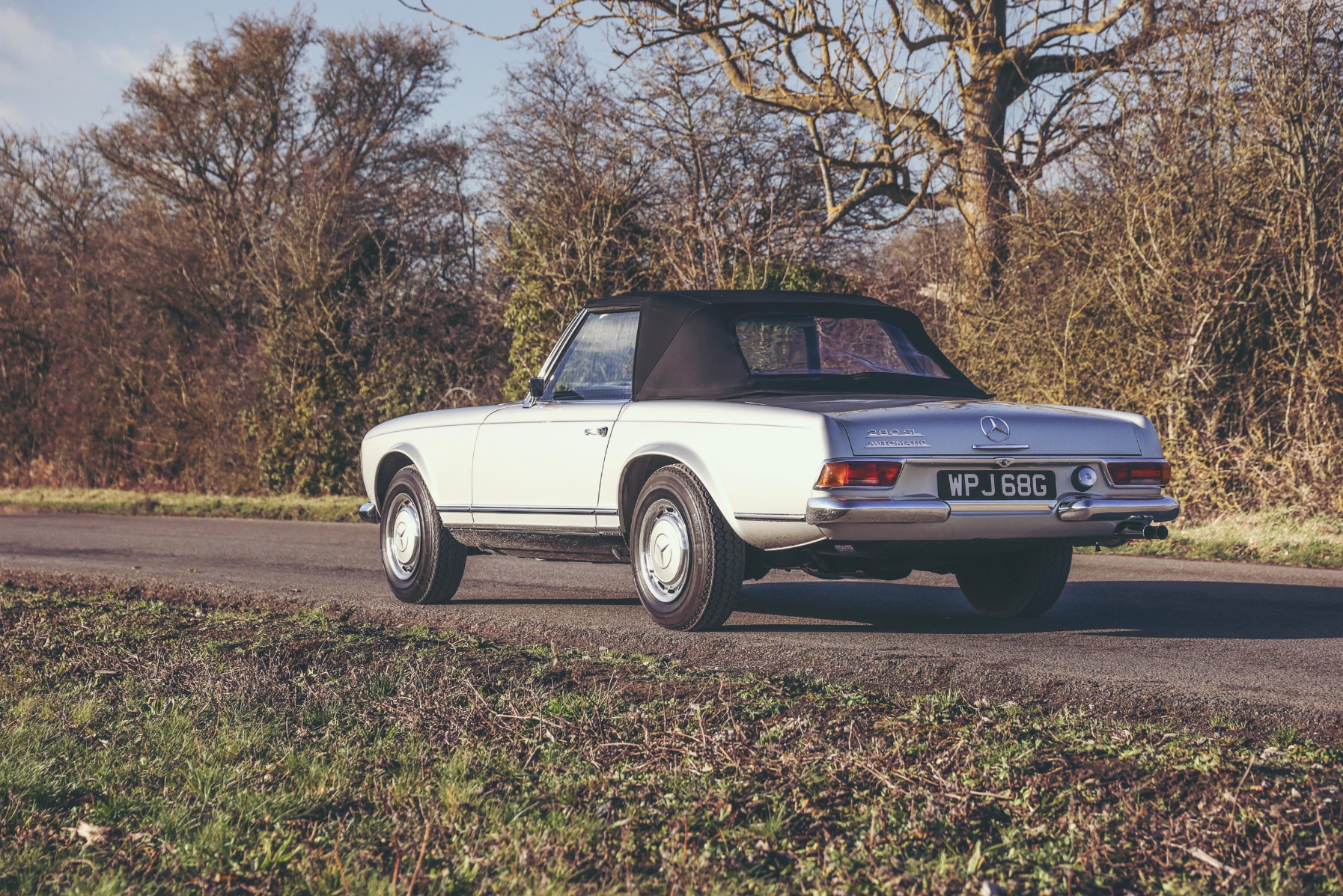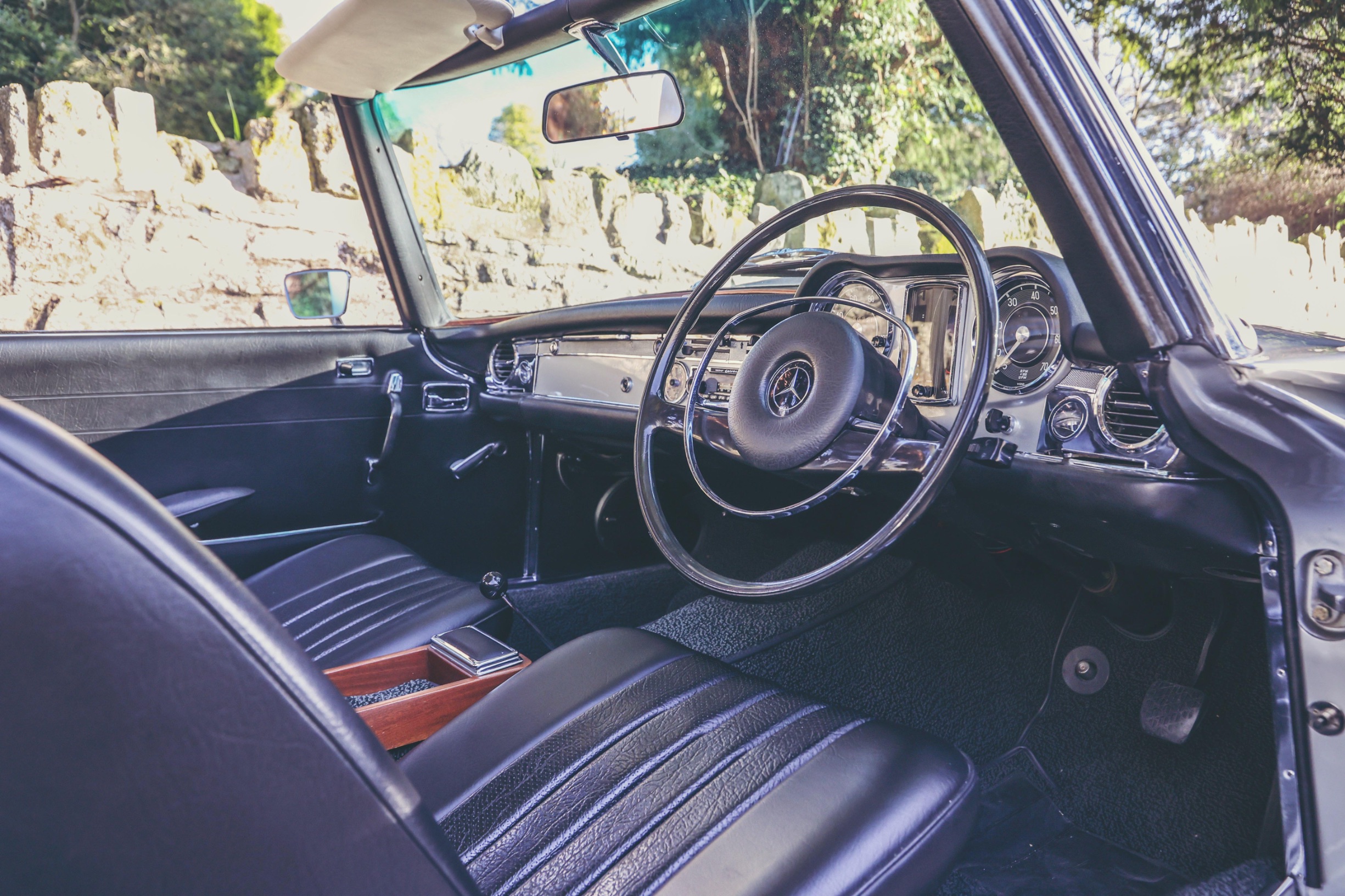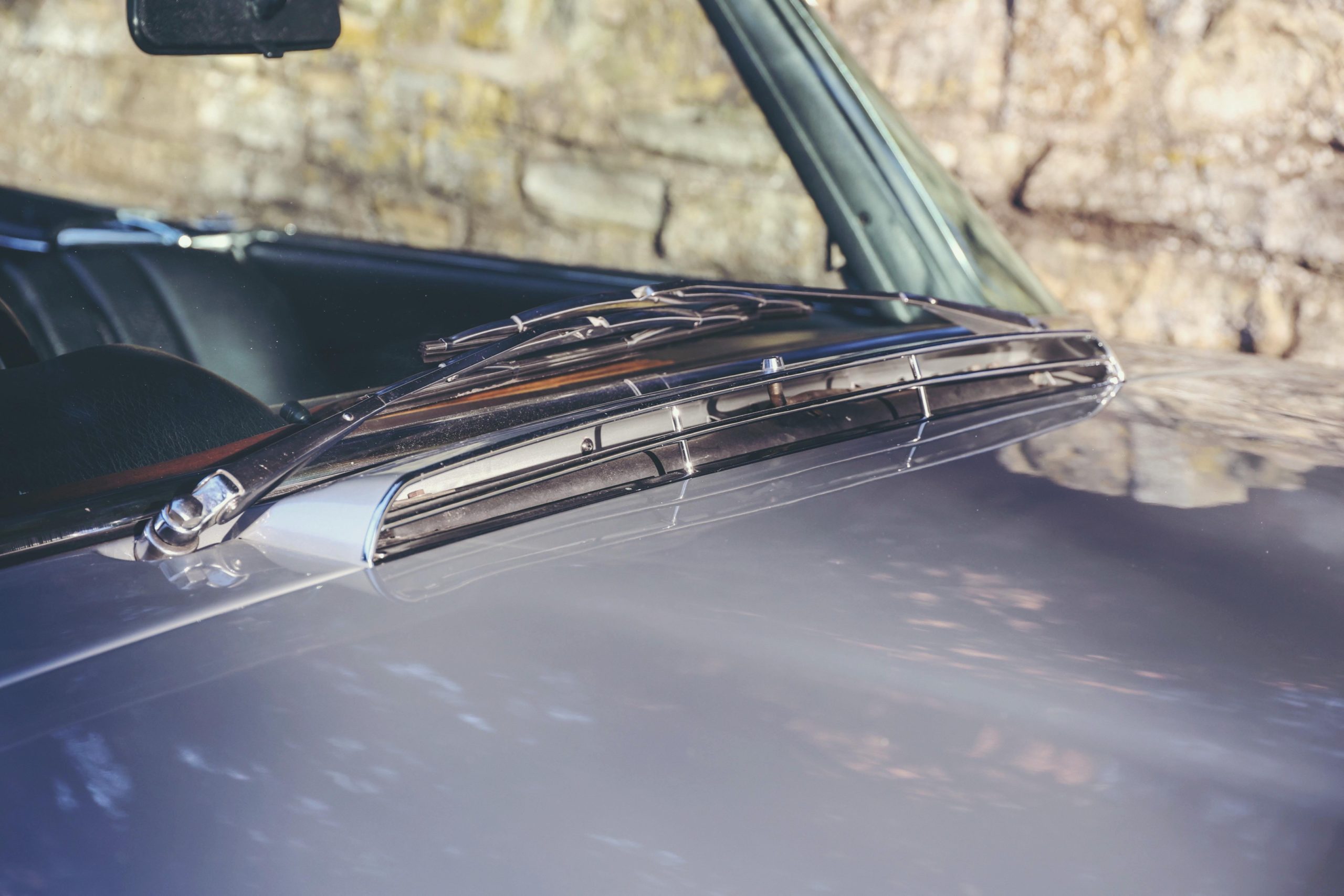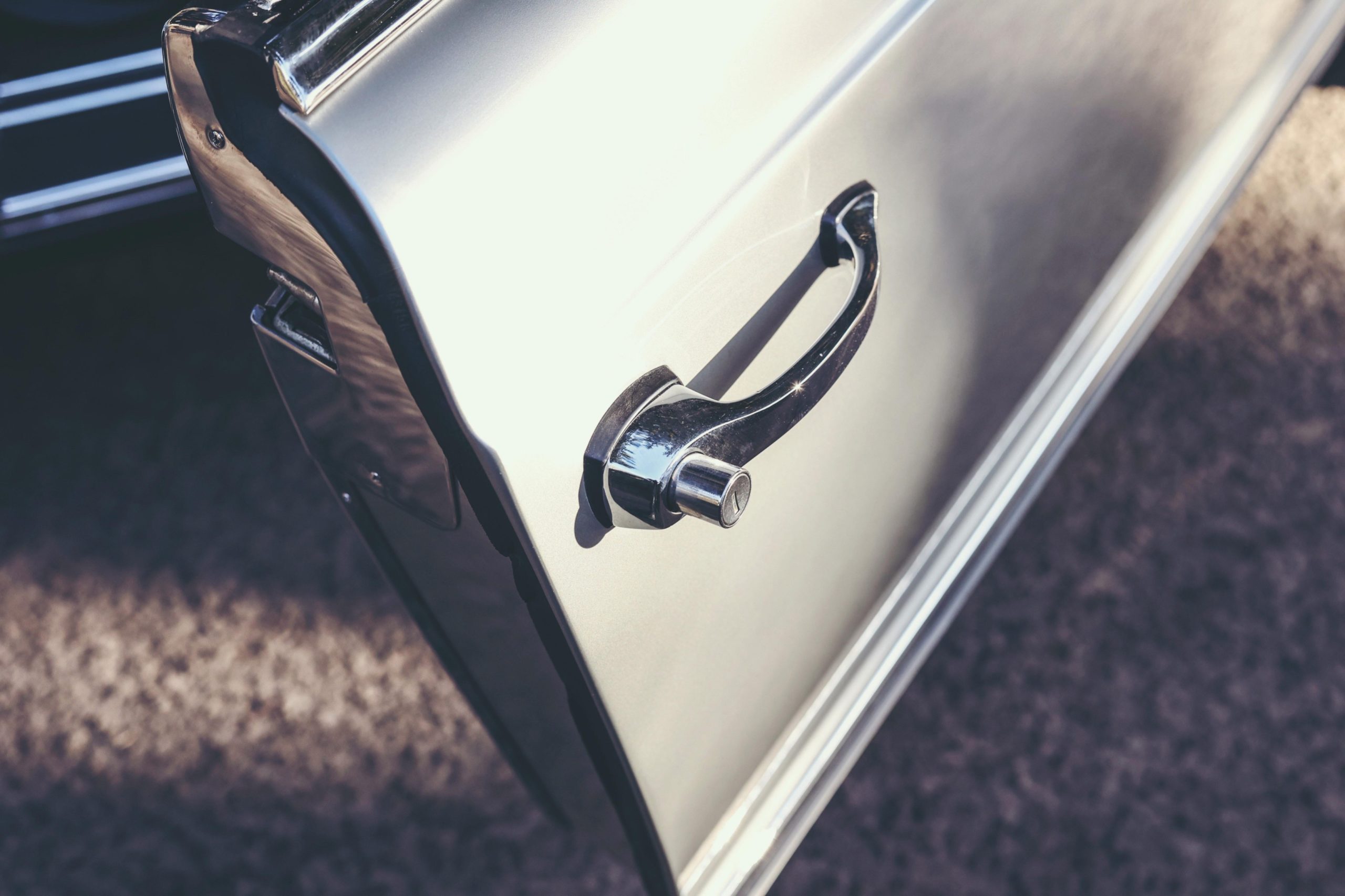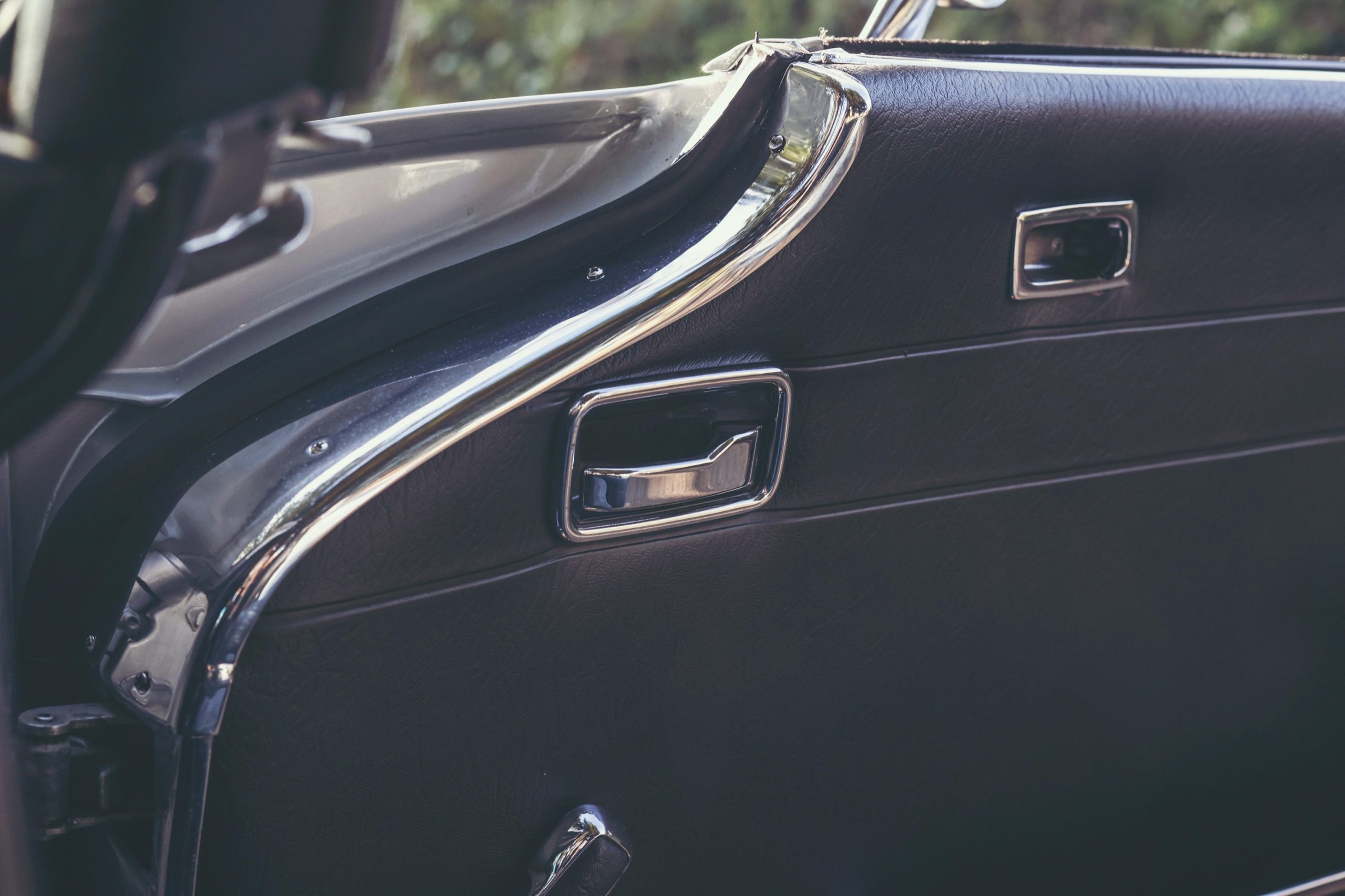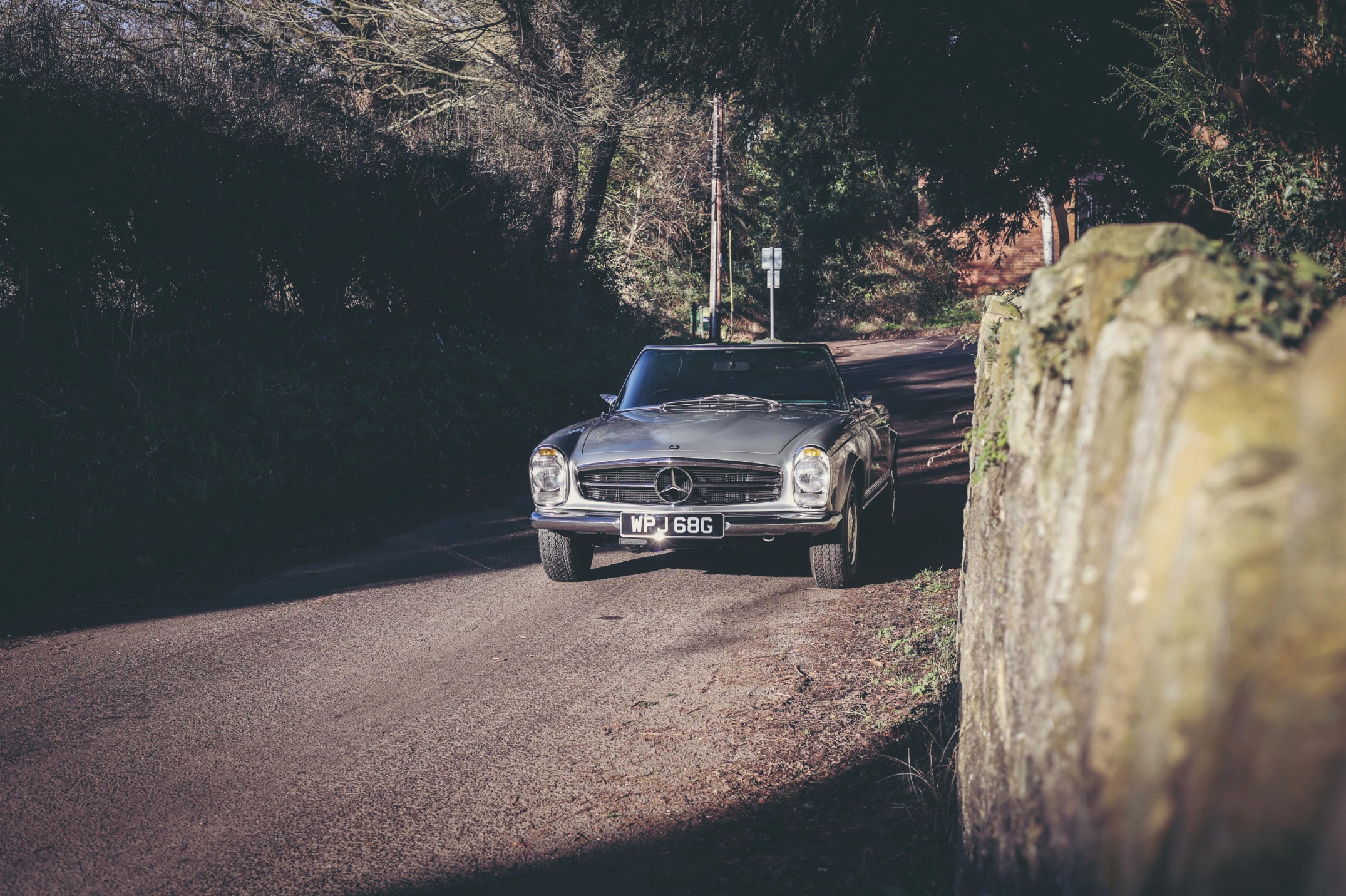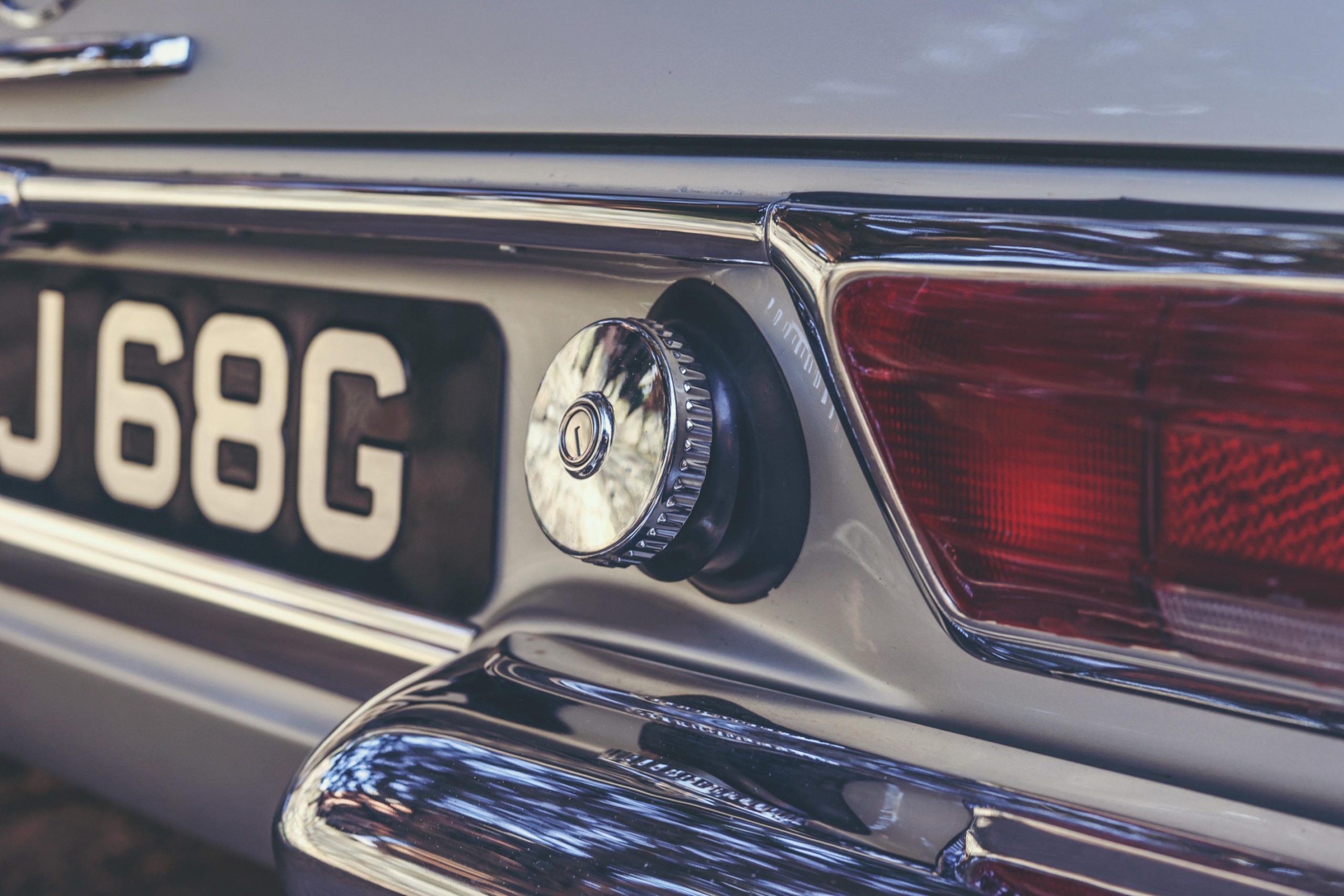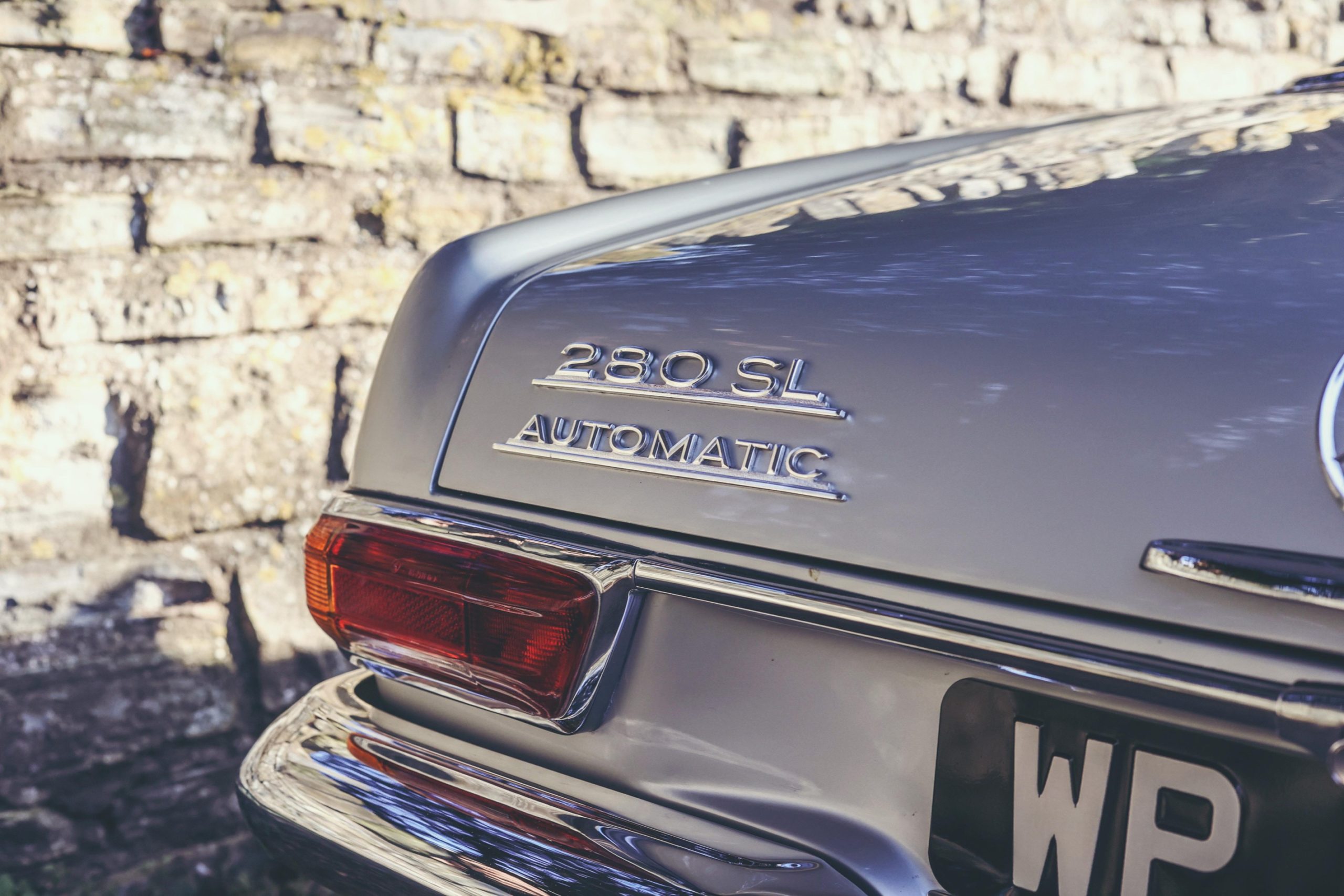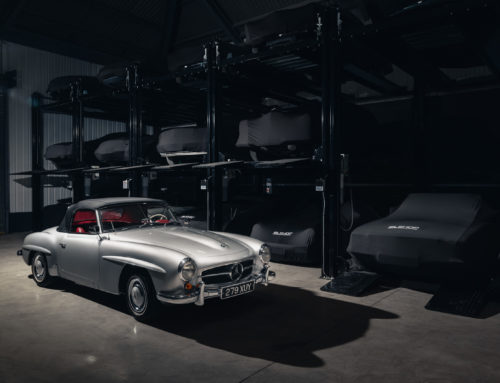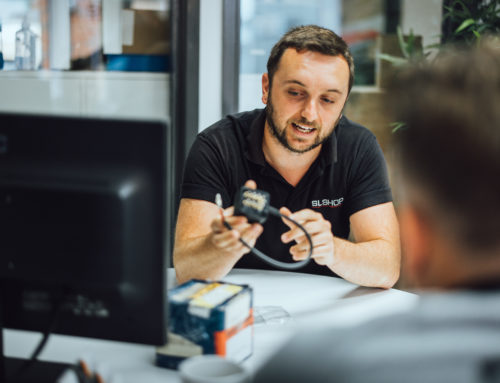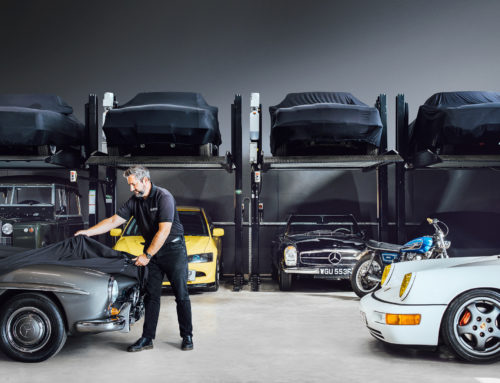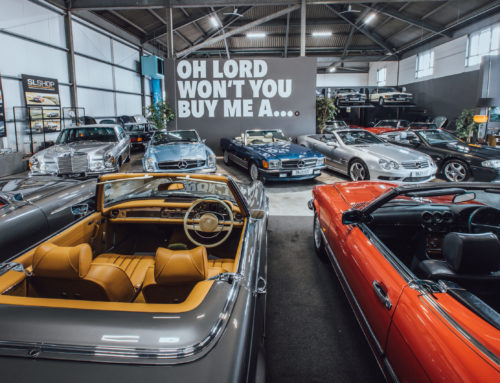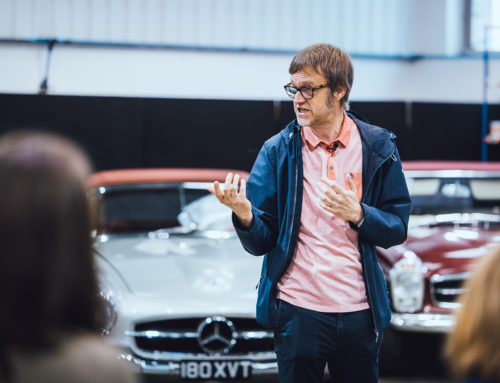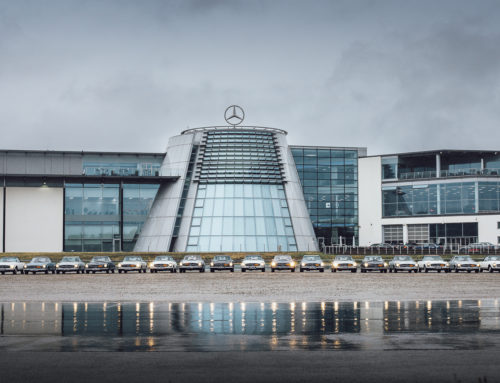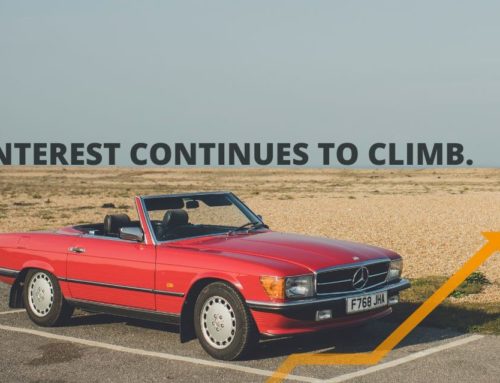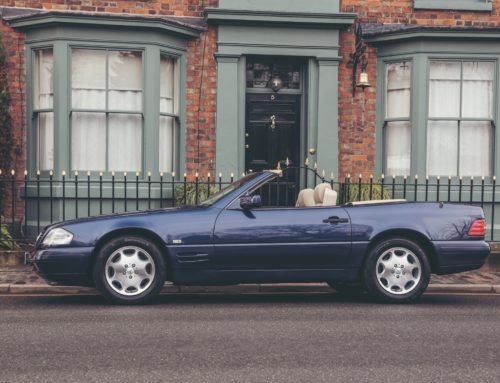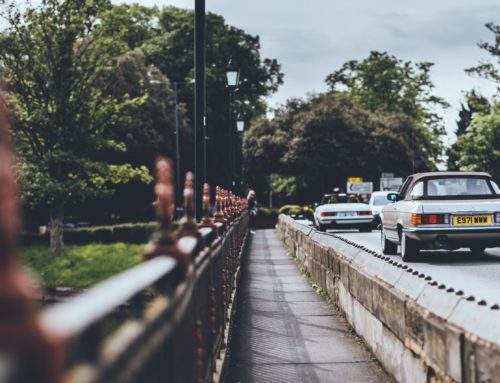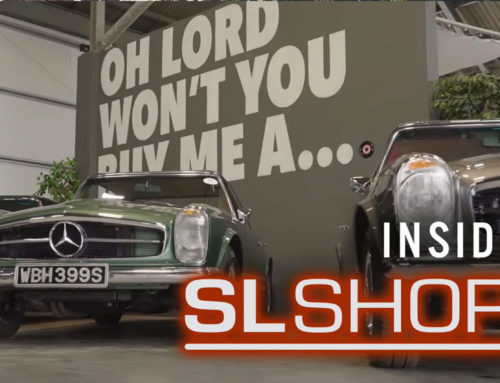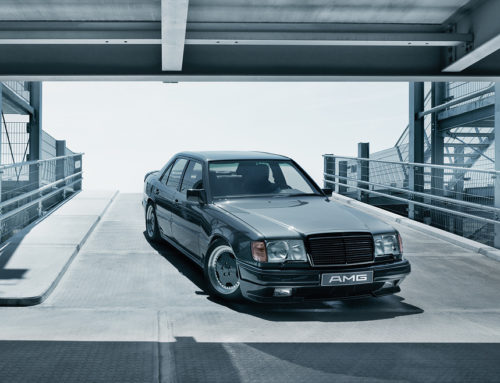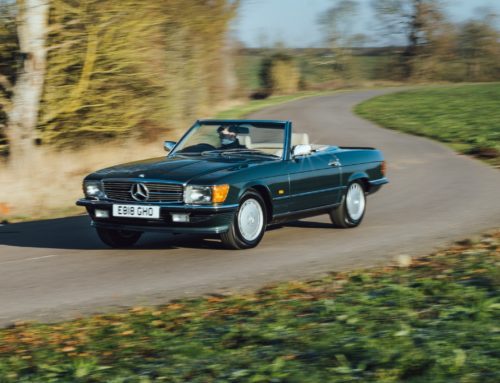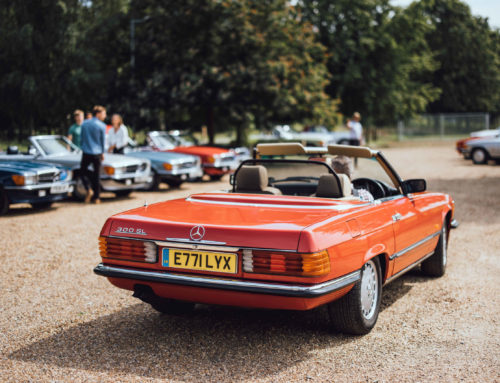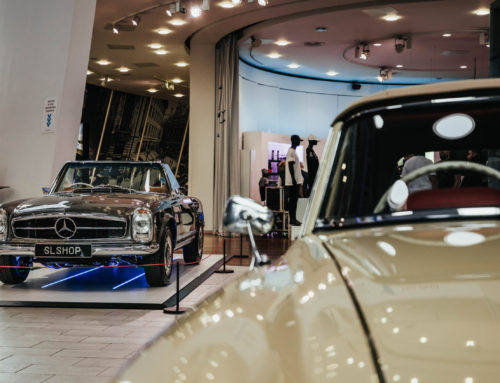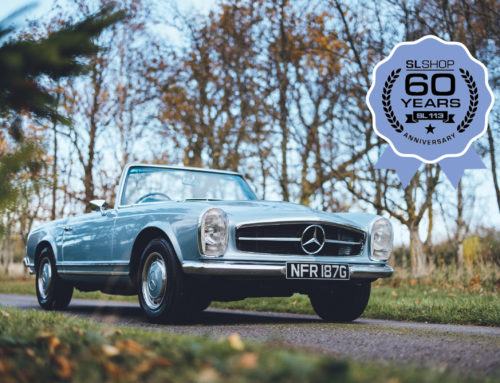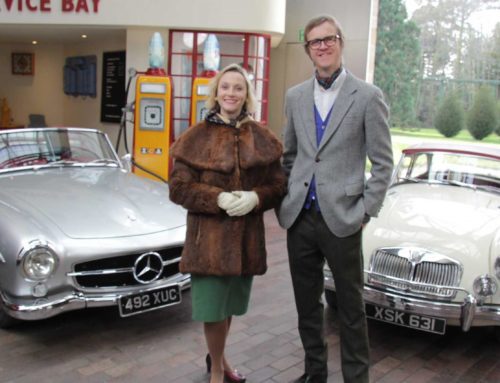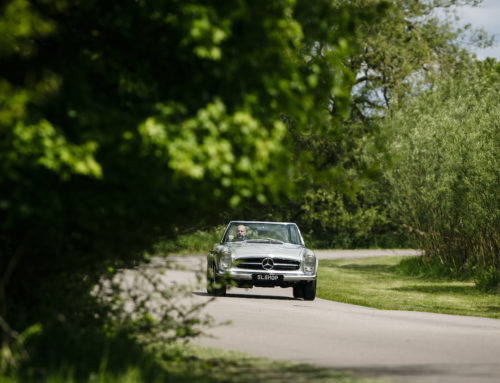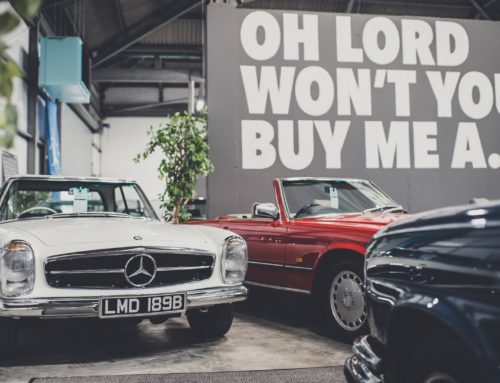A 1968 Mercedes 280SL Pagoda is an interesting focal point here at SLSHOP – it was the first full 12 months that the 280SL would be offered, having been initially launched at the end of 1967. But sales didn’t hit their record highs until 1969, trailing downwards in 1970 and dropping drastically in 1971 when the W113 Pagoda was phased out.
In its first full year of offering, the 1968 Mercedes 280SL Pagoda didn’t far exceed the 230SL’s first year of production, which achieved 6,911 in 1964 whereas the 280SL Pagoda only achieved 6,930 in 1968. So, what was the cause of this? Were there too many options offered by the wider market? Was it the cost or was it that consumers didn’t entirely understand what made the 280SL different from the 230SL?
Production Numbers:
| Model | Chassis | Engine | 1963 | 1964 | 1965 | 1966 | 1967 | 1968 | 1969 | 1970 | 1971 | Total | US | ||
| 230 SL | W113.042 | 2.3L M127.II I6 | 1,465 | 6,911 | 6,325 | 4,945 | 185 | 19,831 | 4,752 | ||||||
| 250 SL | W113.043 | 2.5L M129.II I6 | 17 | 5,177 | 2 | 5,196 | 1,761 | ||||||||
| 280 SL | W113.044 | 2.8L M130 I6 | 143 | 6,930 | 8,047 | 7,935 | 830 | 23,885 | 12,927 | ||||||
| 48,912 | 19,440 | ||||||||||||||
The Market:
The wider market offered little challenge to the Pagoda for many reasons. Yes, you could have a Dino 206 or a Corvette C3, but the W113 Mercedes 280SL Pagoda was built with a deep understanding of the modern wealthy men and women, giving it vast appeal. Its utilitarian and inimitable palatial styling was neither masculine nor feminine, with a charm and presence that meant it needn’t compete on a performance level with other sports cars of the sixties. Sales were strong throughout its years of production despite the competition, with the final years of the 230SL showing the most drastic dip in sales (1965 – 67).
The Cost:
It is a fact that is regularly referenced and one that seems to add an air of surprise to the Pagoda’s success…But does it matter that a Pagoda was double the cost of an E-type? Given the success of the W113 in terms of production numbers (circa 50,000), cost can’t be attributed to the slow uptake of the 280SL. This was the post-war era and the boom was one of explosive capital growth.
Understanding: Same but Different
We can conclude that upon launch, consumers weren’t immediately aware of what the difference was from previous models. From the exterior, the 1968 280SL Pagoda is not apparently different than either the 230SL or 250SL. For the gurus, the details are those that make a 1968 Mercedes 280SL Pagoda stand out from its predecessors. And these details are what make the 280SL preferred by some enthusiasts today.
1968 280SL Mercedes Pagoda Engine Performance:
Whether Mercedes responded to criticism from automotive journalists about lack of ‘Pagoda power’, remains to be seen, but the M130 I6 would help carry the brand forward with strong sales and a steadfast recipe for delighting their affluent domestic and foreign customers. MB took the M129 II and increased the bore by 4.5mm to achieve a stroke of 86.5 mm × 78.8 mm and a displacement of 2,778cc, which was the maximum enlargement possible given the size and limitations of the standard block. In order to achieve this, the water jackets were removed from their position in between the cylinders. The result of this engine upgrade was an increase in performance to 168bhp at maximum power – an approximate increase of 20bhp compared to the 230SL. To accompany this, disc brakes are found all around the Pagoda.
Wondering why a V8 was never selected for the Pagoda – read about Waxenberger’s 250SL monster here.
Aesthetics:
A Mercedes 280SL Pagoda features alternate ratios of chrome inside the car, with the centre boss absent of a centre chrome ring and the rear-view mirror made from a hard composite rather than chrome. Similarly, from the rear of the 280SL, you’ll notice the absence of a protruding spare wheel well found with early 230SLs. The 280SL’s spare wheel is housed horizontally in the boot, streamlining the appearance from the rear.
Other refinements include the change of the three-piece 230SL wheels to single-piece covers as depicted below, the introduction of headrests to the seats, the omission of the passenger’s vanity mirror and the rounding of the dash topper, amongst other things.
- W113 230SL
- W113 280 SL
It’s fair to conclude, then, that the initial uptake of the 280SL was likely down to information. It took some time for the interested buyers to understand what made the 280SL different from its predecessors. Fortunately, with almost 60 years since its launch, there is a wealth of information out there for you to make the right decision for you.
1968 Mercedes 280SL Pagoda to be enjoyed.

The Mercedes W113 Pagoda remains one of the most revered vehicles of the past 100 years. Its charisma and charm are etched in the minds of petrolheads around the world; with many only dreaming of gripping the wheel and gliding along the Fluela Pass. But it’s time to stop dreaming and discover a very special 280SL for your own garage…
Matching Number Silver Grey 280SL Pagoda
Those of you who are familiar with the phrase, ‘matching numbers’, will quickly understand why this 280SL Pagoda is special; for those who don’t, let us explain. In the modern day, fully original specification classic Mercedes is becoming rarer; largely due to the rectification work that has been carried out to a vehicle over the years. This tends to result in engine swaps, new panels and the loss of vital period correct details and vehicle identification numbers. Similarly, cars that have been stolen often have identification numbers deleted to remove traces of the original. Those that restore cars correctly start with the right car and ensure the result is an original vehicle with all the correct characteristics as when originally produced.
This Silver Grey 1968 Mercedes 280SL is exactly the latter. A Pagoda that has been subject to a six-figure restoration between 2015 and 2020, with all the correct identification numbers retained. The engine is correctly identified as a 130 983 22 002096 which is found on the engine block and is correct to the 280SL Pagoda. The VIN 113 044 22 003413 can be found stamped on the hood frame, inner wing, hard top base and gearbox support.
The extent of the restoration is immense, including an engine strip and rebuild, overhaul of the interior with new carpets and re-trimmed seats in Black MB Tex (131). Structurally, some new panels were required but these are the highest reproduction calibre, fitted and aligned perfectly to the rest of the Pagoda. The attention to detail and commitment to restoring this vehicle to period-correct standards can be summarised by the 5 years it took to complete the works. Available upon request are the invoices detailing all the work carried out.
With only 5 owners since 1968, this is an exceptional example of a W113 280SL to own. Below you will find a selection of photos showcasing the exterior and interior of the Pagoda.
Thanks to careful curation, we have our best ever selection of SLs in the showroom at the moment. There is a vast choice of colours, trims, engines and specifications, as well as price points, from across the Mercedes-Benz SL back catalogue. Bruce is available to discuss any of these amazing motor cars and is more than happy to host our car consultancy over the phone, using FaceTime or other digital formats. SLSHOP are offering all buyers free secure storage until we’re able to hand you over the keys for that, oh so, important first drive.
A 1968 Mercedes 280SL Pagoda is an interesting focal point here at SLSHOP – it was the first full 12 months that the 280SL would be offered, having been initially launched at the end of 1967. But sales didn’t hit their record highs until 1969, trailing downwards in 1970 and dropping drastically in 1971 when the W113 Pagoda was phased out.
In its first full year of offering, the 1968 Mercedes 280SL Pagoda didn’t far exceed the 230SL’s first year of production, which achieved 6,911 in 1964 whereas the 280SL Pagoda only achieved 6,930 in 1968. So, what was the cause of this? Were there too many options offered by the wider market? Was it the cost or was it that consumers didn’t entirely understand what made the 280SL different from the 230SL?
Production Numbers:
| Model | Chassis | Engine | 1963 | 1964 | 1965 | 1966 | 1967 | 1968 | 1969 | 1970 | 1971 | Total | US | ||
| 230 SL | W113.042 | 2.3L M127.II I6 | 1,465 | 6,911 | 6,325 | 4,945 | 185 | 19,831 | 4,752 | ||||||
| 250 SL | W113.043 | 2.5L M129.II I6 | 17 | 5,177 | 2 | 5,196 | 1,761 | ||||||||
| 280 SL | W113.044 | 2.8L M130 I6 | 143 | 6,930 | 8,047 | 7,935 | 830 | 23,885 | 12,927 | ||||||
| 48,912 | 19,440 | ||||||||||||||
The Market:
The wider market offered little challenge to the Pagoda for many reasons. Yes, you could have a Dino 206 or a Corvette C3, but the W113 Mercedes 280SL Pagoda was built with a deep understanding of the modern wealthy men and women, giving it vast appeal. Its utilitarian and inimitable palatial styling was neither masculine nor feminine, with a charm and presence that meant it needn’t compete on a performance level with other sports cars of the sixties. Sales were strong throughout its years of production despite the competition, with the final years of the 230SL showing the most drastic dip in sales (1965 – 67).
The Cost:
It is a fact that is regularly referenced and one that seems to add an air of surprise to the Pagoda’s success…But does it matter that a Pagoda was double the cost of an E-type? Given the success of the W113 in terms of production numbers (circa 50,000), cost can’t be attributed to the slow uptake of the 280SL. This was the post-war era and the boom was one of explosive capital growth.
Understanding: Same but Different
We can conclude that upon launch, consumers weren’t immediately aware of what the difference was from previous models. From the exterior, the 1968 280SL Pagoda is not apparently different than either the 230SL or 250SL. For the gurus, the details are those that make a 1968 Mercedes 280SL Pagoda stand out from its predecessors. And these details are what make the 280SL preferred by some enthusiasts today.
1968 280SL Mercedes Pagoda Engine Performance:
Whether Mercedes responded to criticism from automotive journalists about lack of ‘Pagoda power’, remains to be seen, but the M130 I6 would help carry the brand forward with strong sales and a steadfast recipe for delighting their affluent domestic and foreign customers. MB took the M129 II and increased the bore by 4.5mm to achieve a stroke of 86.5 mm × 78.8 mm and a displacement of 2,778cc, which was the maximum enlargement possible given the size and limitations of the standard block. In order to achieve this, the water jackets were removed from their position in between the cylinders. The result of this engine upgrade was an increase in performance to 168bhp at maximum power – an approximate increase of 20bhp compared to the 230SL. To accompany this, disc brakes are found all around the Pagoda.
Wondering why a V8 was never selected for the Pagoda – read about Waxenberger’s 250SL monster here.
Aesthetics:
A Mercedes 280SL Pagoda features alternate ratios of chrome inside the car, with the centre boss absent of a centre chrome ring and the rear-view mirror made from a hard composite rather than chrome. Similarly, from the rear of the 280SL, you’ll notice the absence of a protruding spare wheel well found with early 230SLs. The 280SL’s spare wheel is housed horizontally in the boot, streamlining the appearance from the rear.
Other refinements include the change of the three-piece 230SL wheels to single-piece covers as depicted below, the introduction of headrests to the seats, the omission of the passenger’s vanity mirror and the rounding of the dash topper, amongst other things.
- W113 230SL
- W113 280 SL
It’s fair to conclude, then, that the initial uptake of the 280SL was likely down to information. It took some time for the interested buyers to understand what made the 280SL different from its predecessors. Fortunately, with almost 60 years since its launch, there is a wealth of information out there for you to make the right decision for you.
1968 Mercedes 280SL Pagoda to be enjoyed.

The Mercedes W113 Pagoda remains one of the most revered vehicles of the past 100 years. Its charisma and charm are etched in the minds of petrolheads around the world; with many only dreaming of gripping the wheel and gliding along the Fluela Pass. But it’s time to stop dreaming and discover a very special 280SL for your own garage…
Matching Number Silver Grey 280SL Pagoda
Those of you who are familiar with the phrase, ‘matching numbers’, will quickly understand why this 280SL Pagoda is special; for those who don’t, let us explain. In the modern day, fully original specification classic Mercedes is becoming rarer; largely due to the rectification work that has been carried out to a vehicle over the years. This tends to result in engine swaps, new panels and the loss of vital period correct details and vehicle identification numbers. Similarly, cars that have been stolen often have identification numbers deleted to remove traces of the original. Those that restore cars correctly start with the right car and ensure the result is an original vehicle with all the correct characteristics as when originally produced.
This Silver Grey 1968 Mercedes 280SL is exactly the latter. A Pagoda that has been subject to a six-figure restoration between 2015 and 2020, with all the correct identification numbers retained. The engine is correctly identified as a 130 983 22 002096 which is found on the engine block and is correct to the 280SL Pagoda. The VIN 113 044 22 003413 can be found stamped on the hood frame, inner wing, hard top base and gearbox support.
The extent of the restoration is immense, including an engine strip and rebuild, overhaul of the interior with new carpets and re-trimmed seats in Black MB Tex (131). Structurally, some new panels were required but these are the highest reproduction calibre, fitted and aligned perfectly to the rest of the Pagoda. The attention to detail and commitment to restoring this vehicle to period-correct standards can be summarised by the 5 years it took to complete the works. Available upon request are the invoices detailing all the work carried out.
With only 5 owners since 1968, this is an exceptional example of a W113 280SL to own. Below you will find a selection of photos showcasing the exterior and interior of the Pagoda.
Thanks to careful curation, we have our best ever selection of SLs in the showroom at the moment. There is a vast choice of colours, trims, engines and specifications, as well as price points, from across the Mercedes-Benz SL back catalogue. Bruce is available to discuss any of these amazing motor cars and is more than happy to host our car consultancy over the phone, using FaceTime or other digital formats. SLSHOP are offering all buyers free secure storage until we’re able to hand you over the keys for that, oh so, important first drive.
More from Journal
CARE
THE ULTIMATE CERTIFIED SERVICING INVESTMENT PLAN
Your ownership journey matters to us, which is why we have created a simple certified servicing investment plan, tailored to your individual needs and aspirations.
Start investing today and our dedicated CARE team will work with you to increase the value and enjoyment you receive from your vehicle.

STAY IN TUNE WITH SLSHOP MOMENTS
As part of SLSHOP’s community of enthusiasts, you’ll be the first to hear about events and tours, key product offers, exciting stories from owners around the world and of course… our latest additions to the showroom. So, be the first to know and you might just sneak a car on your driveway or take your car’s condition to new heights with our exclusive replacement parts.
Or, visit SLSHOP Journal
